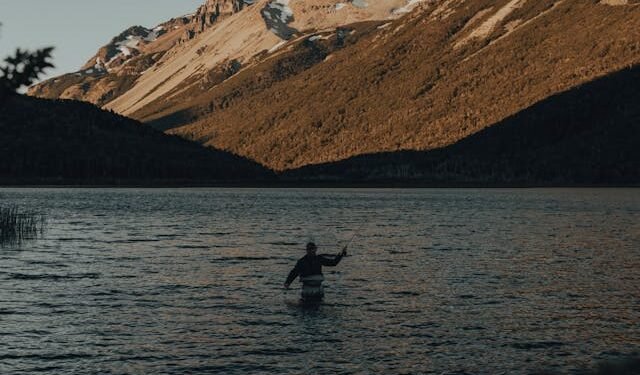Fly fishing is something beyond catching fish-a link to nature, a test of skill, and a peaceful retreat from life. For the beginner, it can look kind of overwhelming at times, but with the right instruction, there is no reason not to fall in love with this timeless sport. With this guide, you’ll know everything you need to get started with confidence.
Choosing the Right Gear
Proper gear is important before even trying your hand at water. Start at the entry-level friendly fly rod and reel combo, and then match this up to the type of fish you will be fishing for. For most beginners, a 5-weight rod is a great all-around choice. Don’t forget smaller essentials: lines, leaders, tippets, and, of course, a box of flies. Simplify and high quality over quantity when starting from potential overload.
Leaning the Art of Casting
The very foundation of fly fishing, mastering the art of casting, has been the make-or-break factor for many. Good news? It’s easier to do than it looks. Start with the overhead cast, something that will involve a lot of fluid back-and-forth motion in your technique. A great way to practice this would be with a piece of yarn tied to your line in an open space like a backyard. Once you become comfortable, you trust yourself to cast onto the water and notice what’s going on around you.
The Right Fly
There are thousands of thousands of different flies, and choosing the right one is quite a task. Fortunately, a simple knowledge of what you’re after and what they eat makes the process much easier. Dry flies float on top of the water, while nymphs sink below to imitate insects in the water column. A small selection of versatile patterns for a beginner, like the Adams or Woolly Bugger, will get you off to a great start. Another good method of bringing home the bacon is by matching the hatch, using flies that pretty much take the shape of the bugs that are currently hatching.
Choosing the right Fishing Spot
Location plays everything when it comes to fly fishing, and proper selection may just make all the difference between making your day rewarding. Rivers, streams, and ponds are not the same challenges and opportunities created. For instance, Missouri River fly fishing is known for their abundant trout population and so-elegant scenery that will surely impress any avid fly fisherman, let alone some beginners. Please do your research on the species of fish in the area you fish in, the regulations it has, along its conditions to make sure an active outing is done.
Catch and Release Practice
For most anglers, catch-and-release is an integral part of the sport because it maintains fish populations as well as their ecosystems. When fishing, it’s a good idea to use wet hands so that the protective slime layer on the fish isn’t damaged. Barbless hooks assist in making release easier with minimal stress. Always make a rapid release to avoid any harm so that the fish will swim away strong. That is one ethical way to sustain the waters that we all enjoy.
Getting into the Fly Fishing Culture
One of the finest ways to grow as a fly fisher is by getting in contact with other members of the community. It is a fantastic way to find resources for beginner fly fishers. These groups offer a base where events, workshops, and guided trips are offered for learning. Whether it be learning new techniques or finding hidden fishing spots, camaraderie with fellow anglers gives depth and fun to the experience.
Conclusion
Fly fishing is an art and a science that allows you to immerse yourself in nature thoroughly. While it may seem overwhelming to a beginner, breaking this sport down into manageable pieces makes it accessible to everybody. Starting with proper gear, practicing a few basic techniques, and checking out places such as the Missouri River makes it easy to find your rhythm quickly. That is why the journey comes almost as rewarding as the catch: every outing has new lessons and memories. In that sense, dive in, enjoy the process, and welcome to the world of fly fishing!












